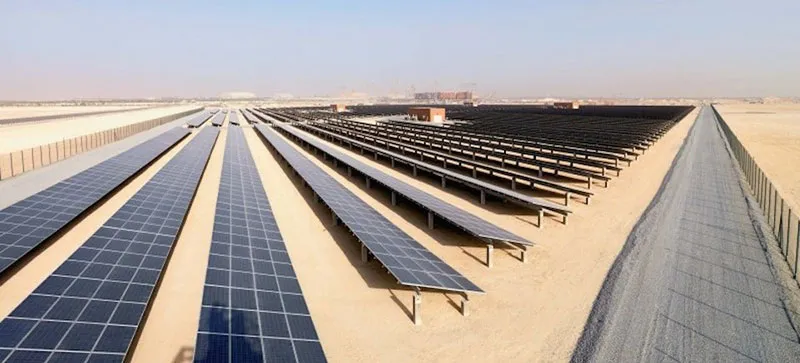Building the World’s First Carbon-Neutral City
Masdar City, near Abu Dhabi, boasts green buildings, a fleet of electric cars and massive solar arrays. But will the experiment work?
/https://tf-cmsv2-smithsonianmag-media.s3.amazonaws.com/filer/4c/5e/4c5edbd9-e71c-4e4c-a35e-5911763dad97/masdarcity26.jpg)
The oil-rich Emirate of Abu Dhabi is well aware that someday the crude will stop flowing. What then? In a rather epic attempt to get ahead of their own future, the powers that be are hard at work building and promoting Masdar City, an ambitious self-contained renewable-energy experimental city designed by Foster and Partners and rising in the desert 11 miles from downtown. Now in its sixth year of development, the city, which is being managed by local conglomerate Masdar (with significant backing from the government), is well underway. As an experiment, it’s fascinating. As a viable hunk of commercial real estate, however, the jury is still out.
With one million square meters (247 acres) developed so far—about 15 percent of the master plan—and 4,000 residents in place, Masdar City is no small undertaking. Its “greenprint” is meant to demonstrate how a city can rapidly urbanize while simultaneously managing energy, water and waste, never forgetting that while “sustainable” is nice, it has to be commercially viable to remain sustainable for the long term.

Nearly all of the electricity in the current phase comes from a massive 87,777-panel, 10-megawatt solar plant along with building-mounted solar panels, and demand is kept in check by an impressive array of design features that minimize the need for air conditioning despite the desert locale. The site is higher than the surrounding land to catch breezes off the Persian Gulf; the short streets are narrow and laid out to maximize shade all day long; building glass is shielded by decorative terracotta grills; and a 45-meter wind tower pulls breezes from above and pushes them through the streets to create a cooling effect. The result: temperatures that the developers claim are generally 15 degrees cooler than the desert.

As for water, the goal is to recycle 80 percent of the wastewater generated by sinks, baths, showers and even dishwashers and washing machines as “greywater”meant for multiple re-use. All buildings must meet the equivalent of LEED Gold certification—a rating awarded by the U.S. Green Building Council—and use sustainable palmwood whenever possible. Interestingly, there are neither faucet handles nor light switches in the city. Everything is motion-activated.
One casualty of design revisions forced by the 2008 financial crisis were the Logan’s Run-style driverless travel pods that would have buzzed around the city. Instead, a fleet of electric vehicles has been deployed for now, but the main goal is to make the compact city as walkable and bikeable as possible, completely eliminating the need for fossil fuel-powered transportation.
As the city slowly rises around Masdar’s Institute of Science and Technology, which specializes in energy and sustainability, other tenants include the International Renewable Energy Agency, Siemens, General Electric and Mitsubishi. Together, they employ a few thousand residents, but the ultimate $20 billion plan, which may not be achieved until 2025 (if at all), is to accommodate 40,000 residents and 50,000 daily mass-transit commuters.
The big question: will Masdar City ever stand on its own financially, making it replicable in places where billions of government dollars aren’t readily available? It looks like we won’t know for at least another ten years, but in the meantime, architects and urban planners can certainly borrow the best ideas from this pricey sustainable playground and leverage them for worldwide benefit. Just be sure to bring along some extra water for the bike tour in case the breezes aren’t blowing.
This article was originally published by the editorial team at XPRIZE, which designs and operates incentivized competitions to bring about radical breakthroughs for the benefit of humanity.